Orbital’s ‘The Box’ was released 25 years ago today. Here’s the story behind its iconic video
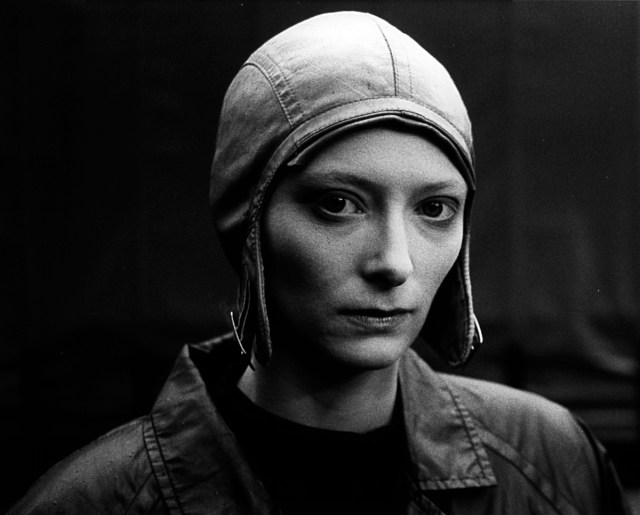
The mid-90s were a halcyon period for music videos, and few were as striking as the short film to accompany Orbital‘s The Box, released on this day 25 years ago (15 April 1996).
In keeping with the mood established by preceding album Snivilisation, The Box (along with the album that accompanied it, In Sides) marked a departure from the straight up rave tracks of the Hartnoll brothers’ early career, with the exploration of more intricate melodies and elaborate themes.
As Paul Hartnoll told NME, the theme of The Box was based on a ‘recurring dream he had about the discovery of a mysterious wooden box in the Welsh countryside, but he would always wake up just at the point he was opening the box, so he never found out what was inside it.’
With such an otherworldly starting point, the accompanying video for the track was never going to be a humdrum affair, and the duo turned to upcoming directors Jes Benstock and Luke Losey of Technobabble to provide a suitable short.
What they delivered was arguably one of the stand-out clips of the decade – the story of an eco-conscious alien-like figure, played by Tilda Swinton, meandering her way around East London – which earned Benstock and Losey a San Francisco Film Festival award, and a nomination for best video at the 1997 Brit Awards (pipped to the post, somewhat embarrassingly, by Spice Girls’ Say You’ll Be There).
To mark the 25th anniversary of its release, 909originals caught up with co-director Jes Benstock to chat about how the project came together.
Hi Jes, thanks for talking to us. Looking back, what were you doing around the time when The Box was created?
I was sharing a warehouse space at the time with a guy called Giles Thacker, who was one-half of the team that did the visuals for Orbital, along with Luke Losey.
Giles and myself worked in different houses over the years and then we moved into this warehouse space; an insanely cold, rat-infested warehouse in Hoxton. It was the kind of place that if you had a party, a number of the locals would show up, and they wouldn’t be there to join the party, if you know what I mean. It was a bit harum scrum.
As it happened, Giles and Luke were a bit stuck with a video for Orbital. Luke had already made a video for Belfast, which was very stylish and featured a ventriloquist’s dummy – which reminded me of watching horror films during my teenage years. They asked me, ‘what would you do, they want do something a bit eco’?
I was really obsessed with experimental animation at the time, and a lot of them had been shown on Channel 4 – things like Neighbours by Norman McLaren, as well as a great Australian animation called Palisade and a Czech animation I can’t remember the name of. They all used stop-frame animation or time lapse animation, and I thought that was a terrific technique if you didn’t have the time to do proper full-on animation.
You could never do that generally with pop videos – you had Peter Gabriel’s Sledgehammer of course, which is stop frame animation, but that was a few years old by this stage. I loved films like Koyaanisqatsi as well.
It’s interesting that you mention Koyaanisqatsi; looking at the video, there’s a definite nod to both that and The Man Who Fell To Earth?
100 percent. Style wise, it’s totally Nicolas Roeg’s Man Who Fell to Earth, the main character is wearing a pilot’s hat and a long coat. We were quite obsessed with a book called K-PAX at the time, which was later made into a movie with Kevin Spacey, although that never really touched the quality or ambiguity of the book.
Another book that I really liked that fed into it was Woman On The Edge Of Time by Marie Piercy; a brilliant sci-fi about a woman who’s in a mental hospital assumed crazy, but actually is a genuine time traveller.
I had seen Koyaanisqatsi many years previously in Edinburgh, at a late night screening. I was obviously blown away by it.
A lot of what Orbital was about was creating images that were trippy without people having to take drugs – we wanted to create something that could be appreciated whether you were off your face or not. Both audiences catered for.
From the sounds of things, you were a bit of a raver yourself back then?
Absolutely, yes. In the early days, in the late 80s, I went to the Mutoid Waste parties – I remember a huge one in Kings Cross – and then I was involved in the Big Chill festival. Then you had the raves – you would get a call that something big is happening in Kent at an old army shooting range, and you would all pile into the car.
I preferred the outdoor festival sort of crazy vibe, where anything was possible, rather than the ‘legal end’ of the rave scene, with bouncers and all that. I was on the Criminal Justice Bill march in 1994, and was quite active in all of that.
Anyway, back to the video. Luke came to you looking for suggestions?
So they said to me, ‘what would you do?’ He had seen Koyaanisqatsi but he hadn’t seen Palisade or Neighbours. Palisade is more of a curio, and it’s probably closest in tone to The Box out of all of them.
We wanted to invoke the sort of eco-warrior feeling of Koyaanisqatsi, the epic nature of man’s destructiveness, the speed of the world and the speed of culture.
One of the guys I worked with on the project was Maxim Ford, who made what you could say was the British Koyaanisqatsi, a film called North, which I saw in the late 80s. He was notoriously tricky to work with, but he did have these amazing custom-built rigs, so nobody in the world could do what he was doing. These things were literally built in a machine shop in Tottenham, they were completely homemade and were controlled by a Palm Pilot. That was great, because then we had these very nerdy gadgets to go along with the overarching idea.
Then it was about casting, and myself and my missus had just been to see Tilda Swinton in The Maybe in the Serpentine Gallery, where she spent several weeks in a box, laying very still. Also, she had worked with Derek Jarman, who is very much present in the video, both through using Tilda as well as the Millennium Mills location which is in The Last of England.
As it turned out, Luke had worked, in a junior way, on the Caravaggio film that Jarman made with Tilda, so he wrote a very carefully-worded letter to her to encourage her to come on board. Also, we wrote our script as carefully as we could, to make it suitable for her.
As she told us, when she received the script, she was recovering from being ill, and had just been out to the shops and had found it quite a harrowing time. She came home, read our script and said ‘this is exactly how I’m feeling!’. That was lucky, as she’s incredibly difficult to get to work with – but she bought into it, hook, line and sinker.
I can imagine that she came into the production meeting and you were like ‘Ok Tilda, we need you to walk around really really slowly’?
There was more to it than that. I said that ‘if we’re going to do this, we need an animator on board’, so I called up Johnny Charles, who I had been to college with. He was a great stop-motion animator. He worked with Tilda for about a week, coaching her on where her feet needed to be for every single frame. Off camera, you had people counting the frames out loud so she could get her positioning right, ’12, 13, 14, 15′ and so on.
Each of these takes would take several minutes, with Johnny or somebody else calling it frame be frame. We had been shooting for four for five days, and Tilda was totally in the vibe of it, and that’s when she added that bit towards the end of the film where she says ‘I love you’. [Ed – it actually appears at 3:07]
That was totally her, she wanted to try it and didn’t tell anybody else she was going to do it. It blew us away when we got the rushes back. What a gift to be given.
That came at the perfect moment of the video as well, because there’s a guy in that scene, credited as a ‘smoker’, whose name is Simon Pennant.
I wanted him in the film because he was actually dying of AIDS at the time. Plus, he was one of the Sisters of Perpetual Indulgence who ‘anointed’ Derek Jarman before he died. Simon ended up dying the following year, as it goes.
The video was shot on location in East London, with some scenes shot during rush hour. That must have been difficult?
It was very stressful. You have to remember that you’re taking shots one frame every few seconds. The fastest scene that was shot was one frame every two seconds, so you’re shooting roughly two seconds of footage every minute. When you start to roll, you’re going to be rolling for about ten minutes – I think seven minutes was the shortest we ever rolled for.
With that in mind, we often set up two cameras, one fixed and one moving. With some of the scenes, it was exhausting, you came home stinking of traffic fumes.
There’s one scene where she’s on a traffic island, and there’s literally cars, taxis, buses outside flying past?
Yeah, you could see the light changing as we were shooting it. It was shot around this time of year, maybe a bit earlier – the end of February or the beginning of March – so you didn’t have masses of daylight. With any scenes where we wanted clouds moving and things like that, that was one frame every 30 seconds, so those shots could take forever.
I have memories of standing by the side of a busy road one day and saying ‘ok, maybe next time, we could film this on a beach – somewhere warm’.
There are lots of secondary characters in the video, including a number of people in the café scene – are these all actors or members of the general public?
There are quite a few that are general public – the guys in the café, for example, which was the Brick Lane Beigel Bakery. We just shot through the window, and were very fast and loose, as you could be in the 90s. You couldn’t do that now, you would have to have all sorts of forms and permissions. But we knew that people would barely recognise themselves, you would have to hold so still to be seen in the final edit.
Phil and Paul Hartnoll are actually in the video, not that you’d know.
I saw them mentioned in the credits alright, and I was wondering. Are they crossing the road at one point?
There’s a long lane, in which Tilda watches a plant grow – that’s where they appear. Not that you’d notice them. I knew they wouldn’t really show up in the final edit unless they really lingered.
It was lovely to have them there, I really love them as people and it was great having them on set. They really got excited about it, even though I was the only person on set at the time that knew their faces wouldn’t be visible.
In fact, we did take some shots in which the faces were more visible, but it didn’t really fit the flow of the film. They were really into that.
What other scenes didn’t make it into the final cut?
There was another scene that we shot in the Barbican, in the greenhouses there, with her encountering a giant rubber plant, but they were a bit too ‘on the nose’. Also there was an amazing scene where she walks along this corridor and there’s light flying in all these directions, but it didn’t really go anywhere or come from anywhere, and at the end of the day we were looking for something that was coherent.
In fact, the record company came in at one point – this was one of my favourite moments. We had shot everything, we had been shooting for two weeks, which is a shitload of time for a pop video, and everybody was absolutely buzzing. And then one of the record company execs came in and asked “can the alien swim underwater?”
We were like, “sorry, what? That’s a whole other film!” It sounds like a great film, but not something we can do in post production, to be honest.
For Orbital, it must have left an impression, because they called their most recent album Monsters Exist, which is one of the messages that appears on the TV screens during the video. For yourself, was it a springboard moment?
It was interesting, because we got approached by David Bowie’s people, and by a number of advertising companies. There were a lot of approaches after it. I did a few more pop videos after that, one for Morcheeba and one for The Levellers. But it was never really my passion. I was always a bit more arty and weird.
I did end up making a full-length documentary called The British Art of Showing Off, as well as a number of shorts that used some of the techniques that we used in The Box.
I suppose the thing about The Box that continued through to the rest of my work was that if we want to create a certain meaning, this is the style we have to shoot it in. That’s what I’ve taken into the rest of my work – I will shoot it in the style that’s right for that particular project.
The Box had this sort of meta vibe, which worked really well with the music and subject matter, and that’s what I’ve been trying to do with my other projects.
Myself and Luke were approached by a number of advertising companies, but I really didn’t want to do advertising at all. I was still very much part of that rave scene, it wasn’t my vibe. The advertising guys were really keen, though, they’re very difficult to get rid of. I ended up saying to them ‘what can I do to get rid of you?’, and they said ‘nothing’. So I said ‘what if I tell you that I’m scared of doing it?’ And they were like, ‘that’ll do it’.
I can imagine the conversation with the advertising people – ‘we want an ad that’s like The Box, except at the end, Tilda Swinton picks up a Pepsi’.
That’s exactly what I feel about advertising, that everything is wonderful wonderful wonderful and then at the end there’s a product. It’s like a cheap gag at everybody’s expense. Maybe it was a bit naive of me to turn them down, but I’m happy I made that decision.
Myself and Luke worked together on a few other things, but not again as a co-directing team. Luke wanted to go more info advertising, and I didn’t, and I wasn’t happy about going forward in any other way than a partnership, so that didn’t happen.
Technobabble kept going for a few more years, and then that was superseded by a project called The Church Of The Living Cinema, so the company became Living Cinema for a while. I think Technobabble was originally set up just so that I could bill people for work to be honest – it suited my nerdy mind. It covered the arty stuff that I was making, which was a bit more experimental; with any corporate stuff that I did, they didn’t really understand the name. Obviously it fitted in with the techno scene, you have to get the nod in there somewhere.
Jes Benstock is currently a director at Lemberg Films, a company he launched ten years ago. He also keeps busy by “raising a number of children, with varying degrees of success,” as he tells us. Details of his many projects can be found at www.benstock.co.uk. Main photo: Tilda Swinton on set of The Box, by Maxim Ford.
[#item_full_content]




















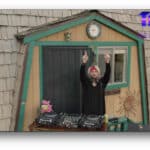
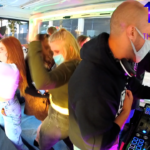
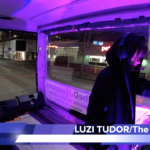
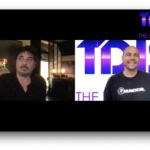

Comments
This post currently has no comments.